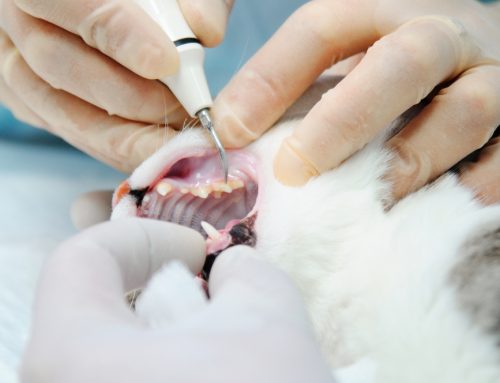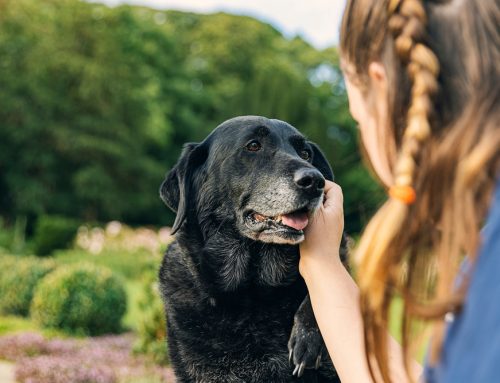
The Decision
When a pet owner and a veterinarian decide that a pet’s health is failing and their quality of life is poor, the possibility of putting them to sleep (also called “euthanasia”) may be considered. Whether this is a decision arrived at gradually as a pet’s health declines with age, or suddenly in the event of catastrophic injury or illness, the choice is never an easy one to make. Our goal is to help you understand how, when, and why we may consider euthanasia when it is beyond our ability to keep an animal comfortable and feeling well.
How do we decide when an elderly pet whose health has been in decline is finally having so much trouble that euthanasia should be considered? Every pet’s situation is different, and there is no single answer that applies to every owner’s choice. Here are a few things that may be taken into consideration:
- “Three Favorite Things” – What were your pet’s three favorite things to do when they were well and in optimal health? Can they still do at least one or two of these things? If not, their quality of life is in decline, and it may be appropriate to consider euthanasia.
- Basic Needs – When a pet can no longer urinate and defecate easily, if they cannot easily access food or water when they need it, if breathing is difficult with minor exertion, and if they cannot rest comfortably, these are serious factors to consider when evaluating their quality of life. Not all pets will necessarily stop eating when they are very ill, but a complete loss of appetite would be a strong indication that the pet is uncomfortable. Furthermore, if a pet seems to be losing interest in what is going on around them, their quality of life is declining.
- Your Ability to Provide Care – An owner who is retired and can spend all day tending to the needs of a sick or elderly pet is in a very different situation than a person who works ten-hour days and cannot assure their pet is comfortable and well attended-to at home. While some owners hesitate to consider their own needs when deciding what is best for a pet, it is appropriate to consider what you will be able to practically handle at home.
The Process
When facing a stressful situation, it often helps to know what to expect. Some owners make an appointment to discuss their pet’s quality of life with a doctor as they begin to consider putting an animal to sleep. Others are already certain that euthanasia is the best course of action in their situation. In either case, a pet owner will have the opportunity to speak to the veterinarian before making a final decision.

Different veterinarians and different veterinary practices may have slightly different protocols and preferences in terms of which medications are administered for euthanasia. Sometimes, an initial medication dose is given to help an animal feel calm and relaxed, or even completely asleep, before the euthanasia drug is given. This drug which directly causes death is a barbituate given at a high dose (at a low dose, a barbituate would cause sedation). In
simple terms, this drug causes the pet to fall asleep and then stops function of the heart and lungs. The veterinarian will give this drug via a needle or catheter into a vein, wait a few moments, then listen to check that the pet’s heart has stopped. Sometimes an animal will take a few last deep breaths or experience some muscle twitching after they have passed away. These are just the effects of the body’s cells losing oxygen after death, they are not anything the pet feels or is aware of.
When a pet is deceased, the owner may choose to have them cremated or take their remains home for burial. Bolton Veterinary Hospital works with a reputable pet cremation service, Inserv. A pet’s cremated remains may be returned to the owner, or alternatively left with Inserv (the company scatters the ashes in an environmentally friendly manner on a Long Island property). An owner who chooses to have their pet’s ashes returned to them may also choose to have a clay imprint of their pet’s paw made as a keepsake.
All of us in the veterinary profession have been in the position of having to decide whether it is time to say goodbye to a pet whose health is failing. We know how difficult this decision is, no matter the circumstances. It is quite normal for a pet owner, and even other pets in the household, to experience a grieving process after the loss of a pet. We have provided a series of resources for grieving pet owners below.
Resources
- The Pet Loss Support Page – www.pet-loss.net
- The Pet Loss Support Hotline – www.vet.cornell.edu/Org/PetLoss
- Books on Pet Loss and Grieving – http://www.petlossathome.com/pet-loss-books/
- Inserv Pet Crematory – www.inservcorp.com
Visit our website and blog at boltonvet.com for more articles like this.
You can also follow us at facebook.com/boltonvet
Copyright Bolton Veterinary Hospital / Michelle K Pesce, DVM
To download and print this article, please click here.






Leave A Comment